Introduction
Since learners look to aviation instructors as role models, it is important that instructors not only know how to teach, but that they project a knowledgeable and professional image. This chapter addresses the responsibilities of aviation instructors as trainers and as safety advocates. It explains how aviation instructors can enhance their professional image, and offers suggestions and sources of information to assist in professional development.
Aviation Instructor Responsibilities
The job of an aviation instructor is to transfer knowledge. Previous chapters have discussed how people learn, the teaching process, and teaching methods. To summarize in brief, instructors help learners meet and exceed established standards. Instructors measure learner performance against those standards and give positive reinforcement along the way. [Figure 8-1]
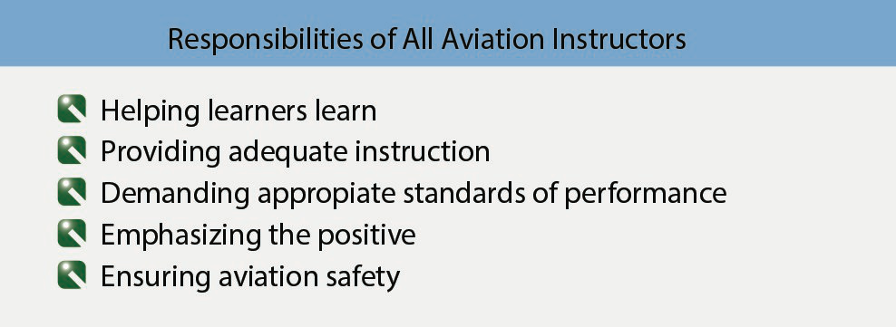
Figure 8-1. There are five main responsibilities of aviation instructors.
Helping Learners
Learning should be an enjoyable experience. By making each lesson a pleasurable experience, the instructor helps the learner maintain a high level of motivation. This does not mean the instructor sacrifices standards of performance to make things easy. The learner experiences satisfaction by doing a good job or by meeting the challenge of a difficult task.
The idea that people need to be led to learning by making it easy is a fallacy. Though learners might initially be drawn to less difficult tasks, they ultimately devote more effort to activities that bring rewards. The use of standards, and measurement against standards, is key to helping learners. Meeting standards holds its own satisfaction for learners. People want to feel capable; they are proud of the successful achievement of difficult goals.
Learning should be interesting. Knowing the objective of each period of instruction gives meaning and interest to the learner, as well as the instructor. Not knowing lesson objectives often leads to confusion, disinterest, and uneasiness on the part of the learner.
Providing Adequate Instruction
To tailor his or her teaching technique to the learner, the flight instructor analyzes the learner’s personality, thinking, and ability. No two learners are alike, and a particular method of instruction may not be equally effective for all learners. The instructor talks with a learner at some length to learn about their background, interests, temperament, and way of thinking, and should be prepared to change his or her methods of instruction as the learner advances through successive stages of training.
An instructor who incorrectly analyzes a learner may find the instruction does not produce the desired results. For example, the instructor at first thinks the individual is not a quick learner because that learner is quiet and reserved. Such a learner may fail to act at the proper time due to lack of self-confidence, even though the situation is correctly understood. In this case, instruction is directed toward developing learner self-confidence, rather than drill on flight fundamentals. In another case, too much criticism may discourage a timid person, whereas brisk instruction may force a more diligent application to the learning task. A learner requiring more time to learn also requires instructional methods that combine tact, keen perception, and delicate handling. If such a learner receives too much help and encouragement, a feeling of incompetence may develop.
For learners who exhibit slow progress due to discouragement or lack of confidence, instructors should assign more easily attained goals. Before attempting a complex task, the instructor separates it into discrete elements, and the learner practices and becomes good at each element. For example, instruction in S-turns may begin with consideration for headings only. Elements of altitude control, drift correction, and coordination can be introduced one at a time. As the learner gains confidence and ability, goals are increased in difficulty.
Conversely, fast learners can also create challenges for the instructor. Because these learners make few mistakes, they may assume that the correction of errors is unimportant. Overconfidence may result, which leads to faulty performance. For these learners, the instructor constantly raises the standard of performance for each lesson, demanding greater effort. Individuals learn only if aware of their errors, and better retention of skills exists for learners who focus their attention on an analysis of their performance. On the other hand, deficiencies should not be invented solely for the learners’ benefit. Unfair criticism immediately destroys a learner’s confidence in the instructor.
In some ways, an aviation instructor serves as a practical psychologist. As discussed in Chapters 2, Human Behavior, and 3, The Learning Process, an instructor can meet this responsibility by becoming familiar and conversant in the fundamentals of instructing and through a careful analysis of and continuing interest in learners.
Most new instructors tend to adopt the teaching methods used by their own instructors or the methods by which they themselves learn best. The fact that one has learned under a certain system of instruction does not mean that the best and most efficient learning occurred. The new instructor needs to remain open-minded and seek other resources and information to develop enhanced teaching ability.
Standards of Performance
An aviation instructor is responsible for training an applicant to established standards in all subject matter areas, procedures, and maneuvers included in the tasks within each area of operation in the appropriate Airman Certification (ACS)/Airman Practical Test
Standards (PTS). It should be emphasized that the ACS/PTS book is a testing document, not a teaching document. [Figure 8-2]
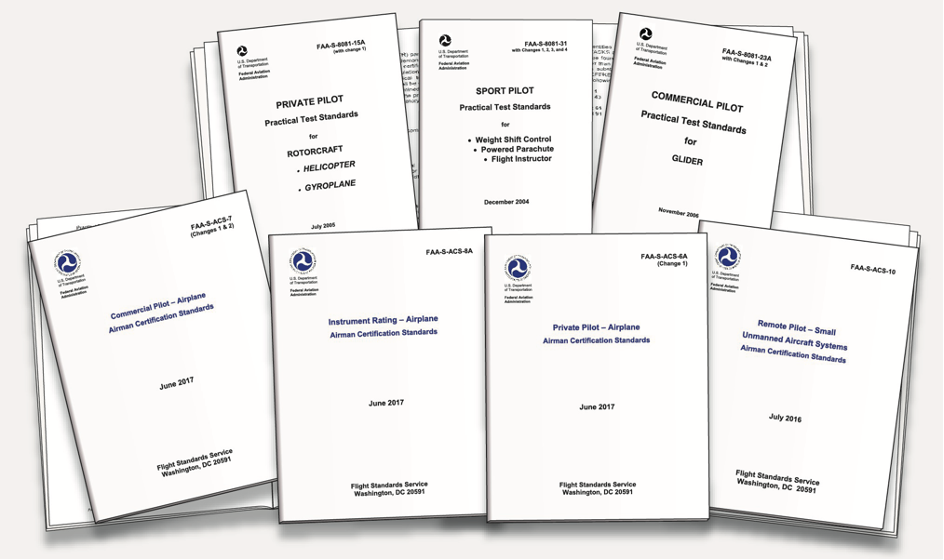
Figure 8-2. Acceptable standards in all subject matter areas, procedures, and maneuvers are included in the appropriate Airman Certification Standards (ACS)/Practical Test Standards (PTS).
Emphasizing the Positive
The way instructors conduct themselves and the attitudes they display make an impression on learners. An aviation instructor’s ability to teach in a manner that gives learners a positive image of aviation contributes to the instructor’s success. [Figure 8-3]

Figure 8-3. Learners learn more when instruction is presented in a positive and professional manner.
Chapter 3, The Learning Process, emphasized that a negative self-concept inhibits the perceptual process, that fear adversely affects learner perceptions, that the feeling of being threatened limits the ability to perceive, and that negative motivation is not as effective as positive motivation. Merely knowing about these factors is not enough. Instructors need to detect these factors in their learners and strive to prevent negative feelings from undermining the instructional process.
Consider how the following negative scenarios conducted during the first lesson might adversely influence and turn off a new learner pilot who has limited or no aviation experience:
⦁ An indoctrination in preflight procedures with emphasis on the critical precautions taken before every flight because “…emergencies in flight can be caused by an improper preflight and are often disastrous.”
⦁ Instruction and hands-on training in the care taken in taxiing an airplane because “…if you go too fast, you lose directional control of the aircraft.”
⦁ Introduction and demonstration of stalls, because “… this is how so many people lose their lives in airplanes.”
⦁ Illustrating and demonstrating forced landings during the first lesson, because “…one should always be prepared to cope with a rope break in a glider.”
These new experiences might make the new learner wonder if learning to fly is a good idea.
In contrast, consider a first flight lesson in which the preflight inspection is presented to familiarize the learner with the aircraft and its components, and the flight is a perfectly normal one to a nearby airport, with return. Following the flight, the instructor can call the learner’s attention to the ease with which the trip was made in comparison with other modes of transportation, and the fact that no critical incidents were encountered or expected.
This does not mean stalls and emergency procedures should be omitted from training. It only illustrates the positive approach in which the learner does not receive overwhelming information. Using a syllabus that considers the learner’s ability to comprehend new information means a foundation exists for that information. The introduction of emergency procedures after the learner has developed an acquaintance with normal operations is less likely to be discouraging and frightening, or to inhibit learning by the imposition of fear.
Nothing in aviation that demands that learners suffer as part of their instruction. Every effort should be made to ensure instruction is given under positive conditions that reinforce training. Instructors may provide flexible training and modify the method of instruction when learners have difficulty grasping a task. In essence, a learner’s failure to perform often results from an instructor’s inability to transfer the required information.
Emphasize the positive because positive instruction results in positive learning.
Minimizing Learner Frustration
Minimizing learner frustrations in the classroom, shop, or during flight training is an instructor’s responsibility. Instructors can encourage rather than discourage learning by following some basic rules.
For example, lesson plans used as part of an organized curriculum help the learner pilot measure training progress. Since most pilots don’t want to be learners, the ability to measure their progress or “see an end in sight” reduces frustration and increases pilot motivation. [Figure 8-4]
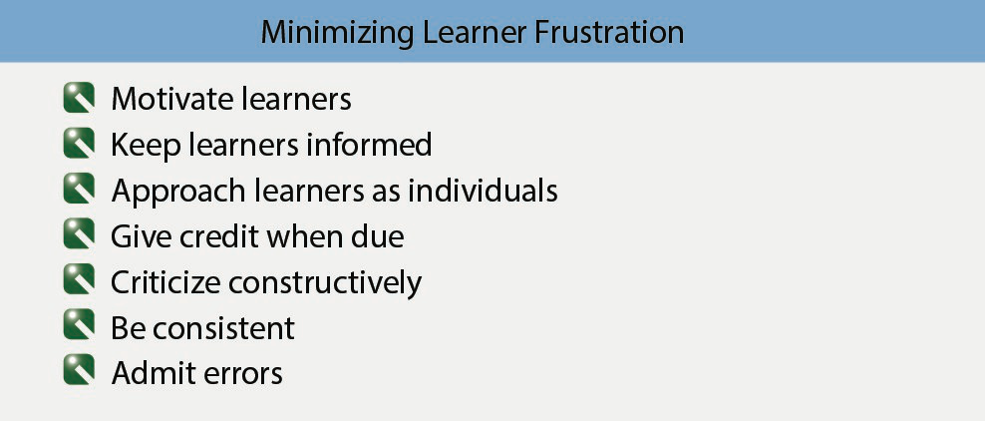
Figure 8-4. These are practical ways to minimize learner frustration.
Motivate learners—more can be gained from wanting to learn than from being forced to learn. Too often, learners do not realize how a particular lesson or course can help them reach an important goal. When learners can see the benefits and purpose of the lesson or course, their enjoyment and their efforts increase.
Keep learners informed—learners feel insecure when they do not know what is expected of them or what is going to happen to them.
Instructors can minimize feelings of insecurity by telling learners what is expected of them and what they can expect in return. Instructors keep learners informed in various ways, including giving them an overview of the course, keeping them posted on their progress, and giving them adequate notice of examinations, assignments, or other requirements.
Approach learners as individuals—when instructors limit their thinking to the whole group without considering the individuals who make up that group, their efforts are directed at an average personality that really fits no one. Each group has its own personality that stems from the characteristics and interactions of its members. Each individual within the group has a unique personality.
Give credit when due—when learners do something extremely well, they normally expect their abilities and efforts to be noticed. Otherwise, they may become frustrated. Praise or credit from the instructor is usually ample reward and provides an incentive to do even better. Praise pays dividends in learner effort and achievement when deserved, but when given too freely, it becomes valueless.
Criticize constructively—although it is important to give praise and credit when deserved, it is equally important to identify mistakes and failures. It does not help to tell learners they have made errors and not provide explanations. If a learner has made an earnest effort but is told that the work is unsatisfactory, with no other explanation, frustration occurs. Errors cannot be corrected if they are not identified, and if they are not identified, they will probably be perpetuated through faulty practice. On the other hand, if the learner is briefed on the errors and is told how to correct them, progress can be made.
Be consistent—learners want to please their instructor. This is the same desire that influences much of the behavior of subordinates toward their superiors in industry and business. Naturally, learners have a keen interest in knowing what is required to please the instructor. If the same thing is acceptable one day and unacceptable the next, the learner becomes confused. The instructor’s philosophy and actions need to be consistent.
Admit errors—who expects an instructor to be perfect? The instructor can win the respect of learners by honestly acknowledging mistakes. If the instructor tries to cover up or bluff, learners sense it quickly. Such behavior tends to destroy learner confidence in the instructor. If in doubt about something, the instructor should admit it.
Flight Instructor Responsibilities
Learning to fly should provide learners with an opportunity for exploration and experimentation. It should be a habit-building period during which learners devote their attention, memory, and judgment to the development of correct habit patterns. All aviation instructors shoulder an enormous responsibility because their learners will ultimately be flying, servicing, or repairing aircraft. Flight instructors may have the additional responsibility regarding evaluation of learner pilots and deciding when they are ready to solo. The flight instructor’s job is to “mold” the learner pilot into a safe pilot who takes a professional approach to flying. Other flight instructor responsibilities can be found in Title 14 of the Code of Federal Regulations (14 CFR) part 61 and FAA advisory circulars (ACs). [Figure 8-5]
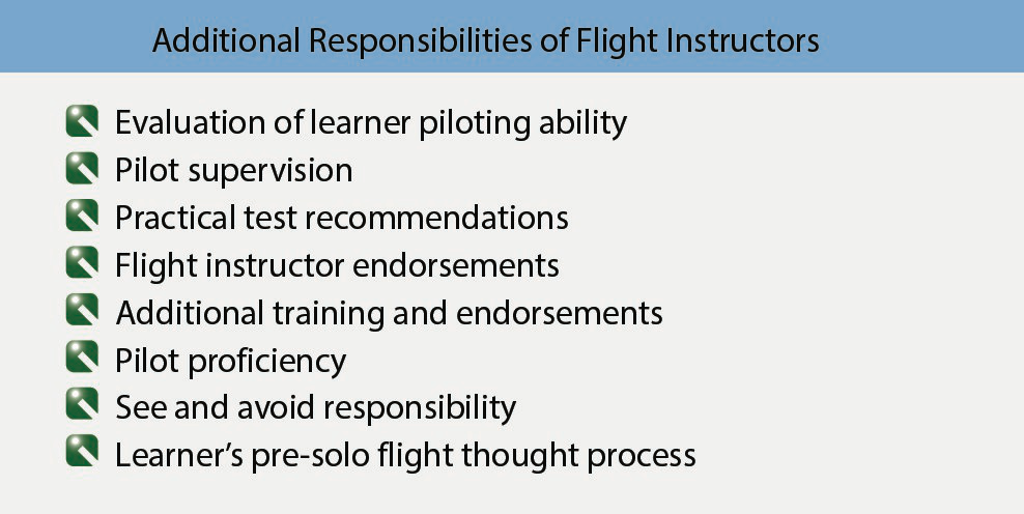
Figure 8-5. The flight instructor has many additional responsibilities.
Instructors should be current and proficient in the aircraft they use and encourage each pilot to learn as much as possible and to continually “raise the bar.” Flight instructors teach other pilots to remain focused on safety of flight and to use risk mitigation. It is also important to provide an understanding of why pilots are trained to standards, how these standards are set, and that meeting the standard provides a limited margin of safety.
Physiological Obstacles for Flight Learners
Although most learner pilots have been exposed to air travel, they may not have flown in light, training aircraft. Consequently, learners may react to unfamiliar noises or vibrations, or experience unfamiliar sensations due to G-force, or an uncomfortable feeling in the stomach. To teach effectively, instructors cannot ignore the existence of these negative factors, nor should they ridicule learners who are adversely affected. These negative sensations can usually be overcome by understanding the nature of their causes. Remember, a sick learner is preoccupied and may not have the mental or physical capacity to learn.
Ensuring Learner Skill Set
Flight instructors ensure learner pilots develop the required skills and knowledge prior to solo flight. The learner pilot needs to show consistency in the required solo tasks: takeoffs and landings, ability to prioritize maintaining control of the aircraft, proficiency in flight, traffic pattern operation, proper navigation skills, and proper radio procedure and communication skills. Learner pilots should receive instruction to ask for assistance or help from the ATC system when needed.
Mastery of the skill set includes consistent use as well as increased accuracy of performance. The decision to determine when a learner is ready for solo flight should be a joint decision between learner and instructor. Generally, this determination is made when the instructor observes the learner from preflight to engine start to engine shutdown and the learner performs consistently, without need of instructor assistance.
Flight instructors need to provide adequate flight and ground instruction for each item included in the applicable ACS/ PTS. The ACS integrates risk management and safety throughout and with supplementary appendix information. PTS lists special emphasis items. Some common items include:
- Positive aircraft control
- Procedures for positive exchange of flight controls
- Stall and spin awareness
- Collision avoidance
- Wake turbulence and low-level wind turbulence and wind shear avoidance
- Runway incursion avoidance
- Controlled flight into terrain (CFIT)
- Aeronautical decision-making (ADM)/risk management
- Checklist usage
- Spatial disorientation
- Temporary flight restrictions (TFR)
- Special use airspace (SUA)
- Aviation security
- Wire strike avoidance
Flight instructors should be current on the latest procedures regarding pilot training, certification, and safety. It is the flight instructor’s responsibility to maintain a current library of information. These sources are listed in the appropriate ACS/PTS, and other sources can be located on the Internet at www.faa.gov and www.faasafety.gov. The FAA websites provide comprehensive information to pilots and instructors. Other aviation organizations also have excellent information. However, an instructor should follow procedures in the manner prescribed by the FAA. If an instructor needs any assistance, he or she should contact a more experienced instructor, an FAA Designated Pilot Examiner (DPE), or the local Flight Standards District Office (FSDO).
Aviator’s Model Code of Conduct
The Aviator’s Model Code of Conduct presents broad guidance and recommendations for General Aviation (GA) pilots to improve airmanship, flight safety, and to sustain and improve the GA community. The Code of Conduct presents a vision of excellence in GA aviation. Its principles both complement and supplement what is merely legal. The Code of Conduct is not a “standard” and is not intended to be implemented as such. The code of conduct consists of the following seven sections:
- General Responsibilities of Aviators
- Passengers and People on the Surface
- Training and Proficiency
- Security
- Environmental Issues
- Use of Technology
- Advancement and Promotion of General Aviation
Each section provides flight instructors a list of principles and sample recommended practices. Successful instructor pilots continue to self-evaluate and find ways to make themselves safer and more productive. The Aviator’s Model Code of Conduct provides guidance and principles instructors should integrate into their own practices. More information about the Aviator’s Model Code of Conduct can be found at www.secureav.com.
Safety Practices and Accident Prevention
Aviation instructors are on the front line of efforts to improve the safety record of the aviation industry. Safety, one of the most fundamental considerations in aviation training, is paramount. Comprehensive FAA regulations promote safety by eliminating or mitigating conditions that can cause death, injury, or damage, but even the strictest compliance with regulations may not guarantee safety. Rules and regulations are designed to address known or suspected conditions detrimental to safety, but there is always a chance that some new combination of circumstances not contemplated by the regulations will arise. It is important for aviation instructors to be proactive to ensure the safety of flight or maintenance training activities. The safety practices aviation instructors emphasize have a long-lasting effect on learners. Generally, learners consider their instructor to be a role model whose habits they attempt to imitate, whether consciously or unconsciously. The instructor’s advocacy and description of safety practices mean little to a learner if the instructor does not demonstrate them consistently. For example, if a maintenance learner observes the instructor violating safety practices by not wearing safety glasses around hazardous equipment, the learner probably will not be conscientious about using safety equipment when the instructor is not around. One of the best actions a flight or maintenance instructor can take to enhance aviation safety is to emphasize safety by example.
Another way for the instructor to advocate safety is to partner with the FAA Safety Team (FAASTeam). The FAASTeam is dedicated to improving the aviation safety record by conveying safety principles and practices through training, outreach, and education. More information is available at FAASafety.gov.
Flight Instructor Qualifications
A flight instructor needs to be thoroughly familiar with the functions, characteristics, and proper use of all flight instruments, avionics, and other aircraft systems being used for training. This is especially important due to the wide variety in global positioning systems (GPS) and glass panel displays.
Each flight instructor should maintain familiarity with current pilot training techniques and certification requirements. Frequent review of new periodicals and technical publications, personal contacts with FAA inspectors and designated pilot examiners (DPE), and participation in pilot and flight instructor clinics such as the FAASTeam/SAFE quarterly series of Flight Instructor Open Forums facilitate awareness of current requirements. Additional information can be obtained from veteran flight instructors. [Figure 8-6] The continued use of outmoded instructional procedures or the preparation of learners using obsolete certification requirements usually involves rationalization.
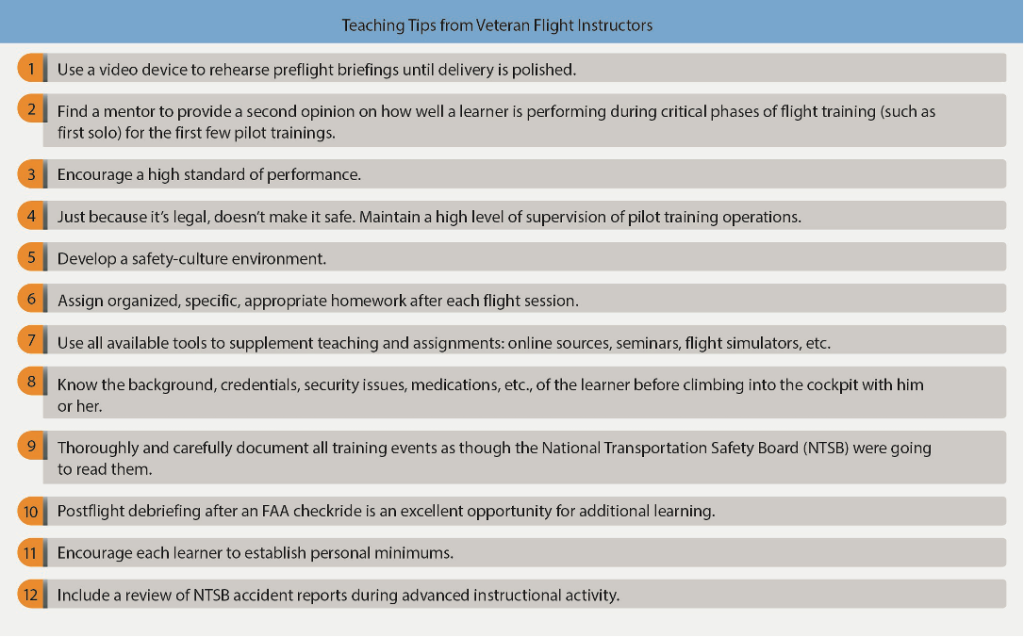
Figure 8-6. Teaching tips from veteran flight instructors.
Professionalism
The aviation instructor is the central figure in aviation training and bears responsibility for all phases of required training. The instructor, either pilot or aircraft maintenance technician, needs to be a professional. As professionals, aviation instructors strive to maintain the highest level of knowledge, training, and currency in the field of aviation. To achieve this goal, instructors need to commit themselves to continuous, lifelong learning and professional development through study, service, and membership in professional organizations such as the Society of Aviation and Flight Educators (SAFE), the National Association of Flight Instructors (NAFI) and Professional Aviation Mechanics Association (PAMA). Professionals build a library of resources that keeps them informed of the most current procedures, publications, and educational opportunities. Being a professional also means behaving in a professional manner. [Figure 8-7] An aviation instructor should strive to practice the characteristics on the Instructor Do’s list when teaching a learner.
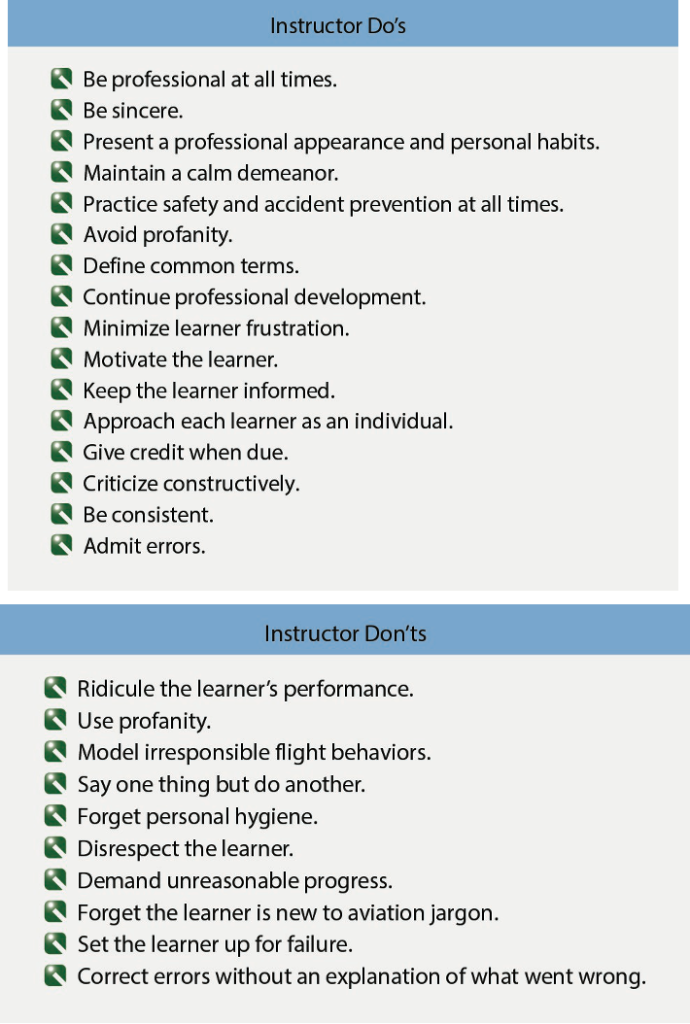
Figure 8-7. Guidelines for an aviation instructor.
Sincerity
An aviation learner normally accepts a competent instructor as a teacher. However, the aviation instructor should be straightforward and honest at all times. Attempting to hide inadequacy behind a smokescreen of unrelated instruction makes it impossible for the instructor to command the respect and full attention of a learner. Any facade of instructor pretentiousness, whether it is real or mistakenly presumed, causes the learner to lose confidence in the instructor and adversely affects learning
Acceptance of the Learner
The instructor needs to accept learners as they are, including all their faults and problems. The learner is a person who wants to learn, and the instructor is a person who is available to help in the learning process. The professional relationship between the instructor and learner should be based on a mutual acknowledgement that the learner and the instructor are important to each other, and that both are working toward the same objective.
Under no circumstance should the instructor do anything which implies degrading the learner. Acceptance (rather than ridicule) and support (rather than reproof) encourage learning. Learners need to be treated with respect, regardless of whether they are quick to learn or require more time to absorb certain concepts. Criticizing a learner who does not learn rapidly is similar to a doctor reprimanding a patient who does not get well as rapidly as predicted.
Personal Appearance and Habits
Personal appearance has an important effect on the professional image of the instructor. Today’s aviation customer expects an instructor to be neat, clean, and appropriately dressed. Since the instructor is engaged in a learning situation, the attire worn should be appropriate to professional status. [Figure 8-8]
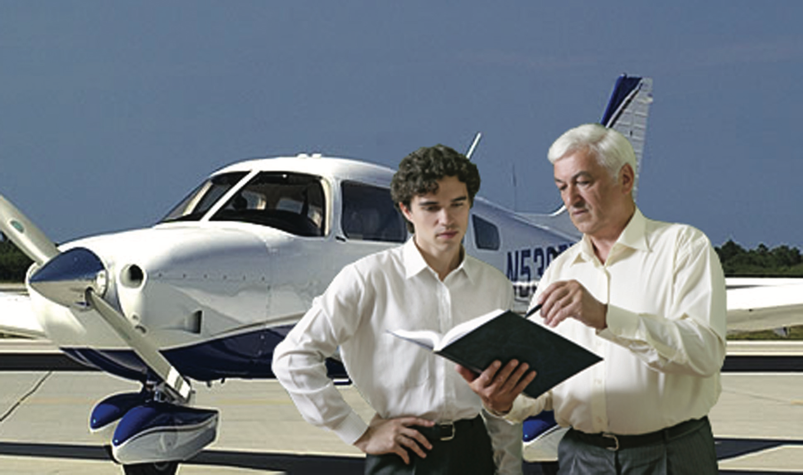
Figure 8-8. The aviation instructor should always present a professional appearance. Personal habits have a significant effect on the professional image. The exercise of common courtesy is perhaps the most important of these. An instructor who is rude, thoughtless, and inattentive cannot hold the respect of a learner, regardless of the instructor’s ability as a pilot or aviation maintenance technician. Personal cleanliness is important to aviation instruction. Frequently, an instructor and a learner work in close proximity, and even little annoyances such as body odor or bad breath can cause serious distractions from learning the tasks at hand.
Demeanor
The attitude and behavior of the instructor can contribute much to a professional image. The instructor should avoid erratic movements, distracting speech habits, and capricious changes in mood. The professional image requires development of a calm, thoughtful, and disciplined demeanor.
The successful instructor avoids contradictory directions, reacting differently to similar or identical errors at different times, demanding unreasonable performance or progress, criticizing a learner unfairly, or presenting an overbearing manner or air of flippancy. Effective instruction is best conducted in a calm, pleasant, thoughtful manner that puts the learner at ease. The instructor should constantly demonstrate competence in the subject matter and genuine interest in the learner’s well-being.
Proper Language
In aviation instruction, as in other professional activities, the use of profanity and obscene language leads to distrust or, at best, to a lack of complete confidence in the instructor. Many people object to such language. The professional instructor speaks normally, without inhibitions, and speaks positively and descriptively, without profanity.
Evaluation of Learner Ability
Evaluation of a learner’s ability is an important element of instruction. Used in this context, evaluation refers to judging a learner’s ability to perform a maneuver or procedure.
Demonstrated Ability
Evaluation of demonstrated ability during flight or maintenance instruction is based upon established standards of performance, suitably modified to apply to the learner’s experience and stage of development as a pilot or mechanic. The evaluation considers the learner’s mastery of the elements involved in the maneuver or procedure, rather than merely the overall performance. For example, qualification of learner pilots for solo and solo cross-country privileges depends upon demonstrations of performance.
Keeping the Learner Informed
When evaluating learner demonstrations of ability, the aviation instructor should keep the learner informed of progress. This may be done as each procedure or maneuver is completed or summarized during a postflight or class critique. These critiques should be in a written format, such as notes, to aid the instructor in covering all areas that were noticed during the flight or lesson. When explaining errors in performance, instructors point out the elements in which the deficiencies are believed to have originated and, if possible, suggest appropriate corrective measures.
Professional Development
Aviation is changing rapidly, and aviation instructors need to continue to develop their knowledge and skills in order to teach successfully in this environment. The aviation instructor is well respected by other technicians and pilots because instructors have trained extensively to be certificated. Flight instructors undergo comprehensive evaluations and a practical test to obtain a flight instructor certificate. 14 CFR part 147 requires all instructors teaching maintenance subjects to hold an FAA certificate as an aircraft maintenance technician.
Successful, professional aviation instructors do not become complacent or satisfied with their own qualifications and abilities and are constantly alert for ways to improve their qualifications, effectiveness, and the services they provide to learners. Considered by their learners to be a source of up-to-date information, instructors have the opportunity and responsibility to introduce new procedures and techniques both to their learners and to other aviation professionals with whom they come in contact.
Continuing Education
A professional aviation instructor continually updates his or her knowledge and skills. This goal is attained in a variety of ways, such as reading an article in a technical publication or taking a course at a technical school. There are many different sources of information the aviation instructor can use in order to remain current in aviation knowledge and teaching.
Government
One of the first educational sources for the instructor is the FAA and other governmental agencies. The FAA either sponsors or collaborates in sponsoring aviation programs, seminars, and workshops for the public. For example, the FAA conducts safety seminars around the country in conjunction with the aviation industry. These seminars, although directed at pilots, can be a useful source of knowledge for aviation instructors.
The FAA is a rich source of information that can be used to enhance an instructor’s knowledge. Regulations, advisory circulars, airworthiness directives, orders, and notices are some of the documents that can be downloaded from the FAA website at www.faa.gov.
Participation in the Pilot Proficiency Awards Program is a good way for a flight instructor to improve proficiency and to serve as an example to learners. Another way is to work toward the Gold Seal Flight Instructor Certificate. Accomplishing the requirements of the certificate is evidence the instructor has performed at a very high level as a flight instructor. See AC 61-65, Certification: Pilots and Flight and Ground Instructors, for a list of requirements for earning this certificate.
Similarly, the Aviation Maintenance Awards Program affords the aviation maintenance instructor the opportunity for increased education through attendance at FAA or industry maintenance training seminars. Details for the awarding of bronze through diamond pins can be found in AC 65-25, Aviation Maintenance Technician Awards Program.
The FAA approves the providers who conduct Flight Instructor Refresher Courses (FIRCs) in accordance with AC 61-83, Nationally Scheduled FAA-Approved Industry-Conducted Flight Instructor Refresher Course. These courses are available for flight instructors to complete the training requirements for renewal of flight instructor certificates.
The FAA cosponsors Inspection Authorization (IA) seminars. These seminars are open to all maintenance technicians and are a good source of additional training and education for maintenance instructors.
Educational/Training Institutions
Professional aviation instructors can further increase their knowledge and skill in aviation specialties by attending classes at local community colleges, technical schools, or universities. These schools may offer complete degree programs in aviation subjects as well as single-subject courses of benefit to instructors.
Commercial Organizations
Commercial organizations are another important source of education/training for the aviation instructor. Some may be publishers or online suppliers of training materials while others may provide complete ground and flight training programs for professional pilots and instructors. These companies often provide a wide variety of study programs including videos, computer-based training, and printed publications. Many offer training that can be attended either at the home base of the company, at classes or seminars around the country, or through internet sites.
There are numerous organizations around the country that offer courses of training for aviation instructors. These are generally courses that are available to all pilots and technicians but are especially useful for instructors to improve their abilities. Examples of such courses include workshops for maintenance technicians to enhance their skills in subjects such as composites, sheet metal fabrication, and fabric covering. For pilots, there are courses in mountain flying, spin training, upset prevention and recovery, and tail wheel qualification to name a few. Flight instructors also may increase their aviation knowledge and experience by adding additional category and class ratings to their certificates.
Industry Organizations
Other significant sources of ongoing education for aviation instructors are aviation organizations. These organizations not only provide educational articles in their publications, but also present training programs or cosponsor such programs.
Many industry organizations have local affiliated chapters that make it easy to meet other pilots, technicians, and instructors. These meetings frequently include presentations by industry experts, as well as formal training sessions. Some aviation industry organizations conduct their own training sessions on areas such as the flight instructor refresher course and Inspection Authorization (IA) seminars. Properly organized safety symposiums and training clinics are valuable sources of refresher training. They are also an excellent opportunity to exchange information with other instructors.
Sources of Material
An aviation instructor should maintain access to current flight publications or maintenance publications. For the flight instructor, this includes current copies of regulations pertinent to pilot qualification and certification, Aeronautical Information Manual (AIM), ACS/PTS, and pilot training manuals. The aviation maintenance instructor should have copies of applicable regulations, current knowledge and ACS/PTS, and maintenance training manuals. Aviation instructors should be thoroughly familiar with current certification and rating requirements in order to provide competent instruction. Many of the advisory circulars should be considered by the aviation instructor as references. The www.faa.gov website maintains current advisory circulars under the Regulations and Policies tab.
In addition to government publications, a number of excellent handbooks and other reference materials are available from commercial publishers through print and online media. Aviation periodicals and technical journals from the aviation industry are other sources of valuable information for instructors. Many public and institutional libraries have excellent resource material on educational psychology, teaching methods, testing, and other aviation related subjects.
The aviation instructor has two reasons to maintain a source of current information and publications. First, the instructor needs a steady supply of fresh material to make instruction interesting and up to date. Second, instructors should keep themselves well informed by maintaining familiarity with what is being written in current aviation publications. Many of these publications are in printed form, but increasingly, information is available through electronic means. [Figure 8-9]
Printed Material
In aviation, documentation in the form of flight publications or maintenance data needs to be immediately available for referral while flying or conducting maintenance. While the portability of printed material meets this need for immediate availability, printed material has two disadvantages. First, it takes up space for storage and second, it can be time consuming to keep printed material current. Many publishers of printed material now make their information available in electronic format. For example, most FAA regulations, standards, and guides are available either in electronic form or as hard copy.
Non-FAA publications are available through the GPO and from the National Technical Information Service (NTIS). Publications not printed by the U.S. Government Printing Office are available from the many publishers and suppliers of books. Commercial publishers usually provide catalogues and toll-free numbers or websites for ordering their products.

Figure 8-9. Aviation instructors can improve their knowledge by becoming familiar with information on the internet.
Electronic Sources
Access to the internet via personal computers, tablets, and smartphones has opened up a vast storehouse of information for the aviation instructor at the FAA website, www.faa.gov and many, many other websites and apps.
Professional aviation instructors should continue to expand their knowledge and skills in order to remain competent. The field of aviation is advancing, and the instructor also needs to advance. Instructors can best do this by taking advantage of the wide variety of materials available from the FAA, other government agencies, commercial publishers and vendors, and from industry trade groups. These materials are available at training sessions and seminars, from printed books, papers, magazines, and from the internet and other electronic sources. Instructors who commit to continuing education are able to provide the highest quality instruction to their learners.
Chapter Summary
This chapter discussed the responsibilities of aviation instructors to the learner, the public, and the FAA in the training process. The additional responsibilities of flight instructors who teach new learner pilots as well as rated pilots seeking add-on certification, the role of aviation instructors as safety advocates, and ways in which aviation instructors can enhance their professional image and development were explored.





